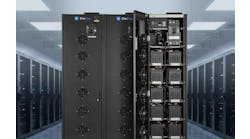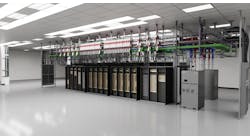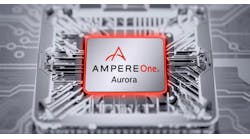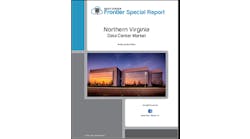'C' Revision of TIA-942 Data Center Standard Specifies for Fiber Connectivity, Cabinet Widths
At its most recent meeting, held the week of February 5, the Telecommunications Industry Association’s Engineering Committee TR-42.1 Premises Telecommunications Infrastructure authorized the publication of the “C” revision of the TIA-942 Data Center Telecommunications Infrastructure Standard.
As a standards development organization (SDO), the TIA produces standards in accordance with American National Standards Institute (ANSI) procedures; those procedures require a standard to be revised, affirmed, or rescinded every 5 years.
The revision process can take multiple years to complete, and with TIA standards, revisions are given letter designations (i.e. “A” for the first revision, “B” for the second revision, etc.). This now-approved and soon-to-be-published document is the third revision since the original 942 standard was published.
The ANSI/TIA-942 standard covers the telecommunications infrastructure, the power infrastructure, the mechanical infrastructure, the architecture, the fire protection, security, and the monitoring of data centers. TIA-942 covers all types of data centers including hyperscale, colocation, enterprise, etc.
The TIA-942-C standard will include several significant modifications from the TIA-942-B version—including the incorporation of previously published standards documents, recognition of a new media type and connectivity, new requirements, new recommendations, and references to technical documentation published by other SDOs.
Also, like most TIA standards, 942-C will include several annexes, which provide additional information to what is in the body of the standard. Often an annex to a TIA standard will include tables. An annex may be informative or normative.
Generally speaking, an informative annex is descriptive, providing useful information or describing concepts addressed in the standard. A normative annex, on the other hand, can be considered prescriptive rather than descriptive.
A normative annex contains information that details how to comply with certain requirements. A normative annex to a TIA standard can be considered a requirement as opposed to an option.
Following are the major modifications that will be found in ANSI/TIA-942-C.
Incorporation of previously published documents
- TIA-942-C will incorporate the material contained within ANSI/TIA-942-B-1, the first addendum to 942-B, which focuses on edge data centers.
Recognition of new media and connectivity
- Single balanced twisted-pair cable will be a recognized cable type for horizontal cabling.
- At connections outside the equipment outlet (EO), any optical connector compliant with the TIA-568.3 standard is permitted. At the EO, LC and MPO connectors are still required.
Requirements
- Where balanced twisted-pair cabling is used for wireless access points, two (2) Category 6A or higher-performing cabling runs are required at a minimum.
- In the main distribution area (MDA), intermediate distribution area (IDA), and horizontal distribution area (HDA), cabinets must have a minimum width of 800mm.
- The minimum floor loading capacity for computer rooms less than 20 m2 (220 ft2) is 5 kilopascal (kPA), or 100 lbf/ft2.
Recommendations
- TIA-942-C will recommend a minimum of two (2) optical fibers for horizontal and backbone cabling.
References to other technical documents including recommendations and requirements
- Temperature and humidity guidelines have been updated to require the recommended temperature and humidity envelope defined in ASHRAE TC 9.9 Thermal Guidelines for Data Processing Environment, 5th Edition, including the addition of new High Density H1 Class.
- TIA-942-C will include thermal guidelines from ASHRAE TC 9.9 Technical Bulletin on Edge Computing. This information will be included in the Annex on Micro Edge Data Centers.
- New recommendations for management of micro edge data center environments will harmonize with ASHRAE TC 9.9.
Informative and normative annexes
- The annex addressing the coordination of equipment plans with other engineers has been converted from informative to normative.
- The annex on data center space considerations also has been converted from informative to normative.
- The annex on data center site selection and building design considerations has been converted from informative to normative.
- The annex on data center infrastructure rating has been converted from informative to normative (although any data center rating system may be used).
- Multiple updates have been made to data center rating tables in Annex D to make them normative if the TIA-942 rating system is used. These updates also were made to reflect the current state of data center technology.
- The annex on edge data center types was converted from informative to normative (although any edge data center classification system may be used).
- A new informative annex addresses immersion cooling considerations.
- Multiple updates were made to micro edge data center type tables in Annex F, to make them normative if the TIA-942 classification system is used, and to reflect the current state of data center technology.
- Within the document, annexes have been reordered so normative annexes appear before informative annexes.
While the TIA-942-C Data Center Telecommunications Infrastructure Standard has been authorized for publication, it is not yet published. Once published, it will be available for purchase through Accuris, or through the TIA’s standard subscription service.

Patrick McLaughlin
Patrick McLaughlin is Chief Editor of Cabling Installation & Maintenance, Data Center Frontier's sibling publication in Endeavor Business Media. Patrick has covered the cabling industry for more than 25 years. He has authored hundreds of articles on technical and business topics related to the specification, design, installation, and management of information communications technology systems. He has presented at live in-person and online events, and he has spearheaded cablinginstall.com's webcast seminar programs for more than 15 years.






